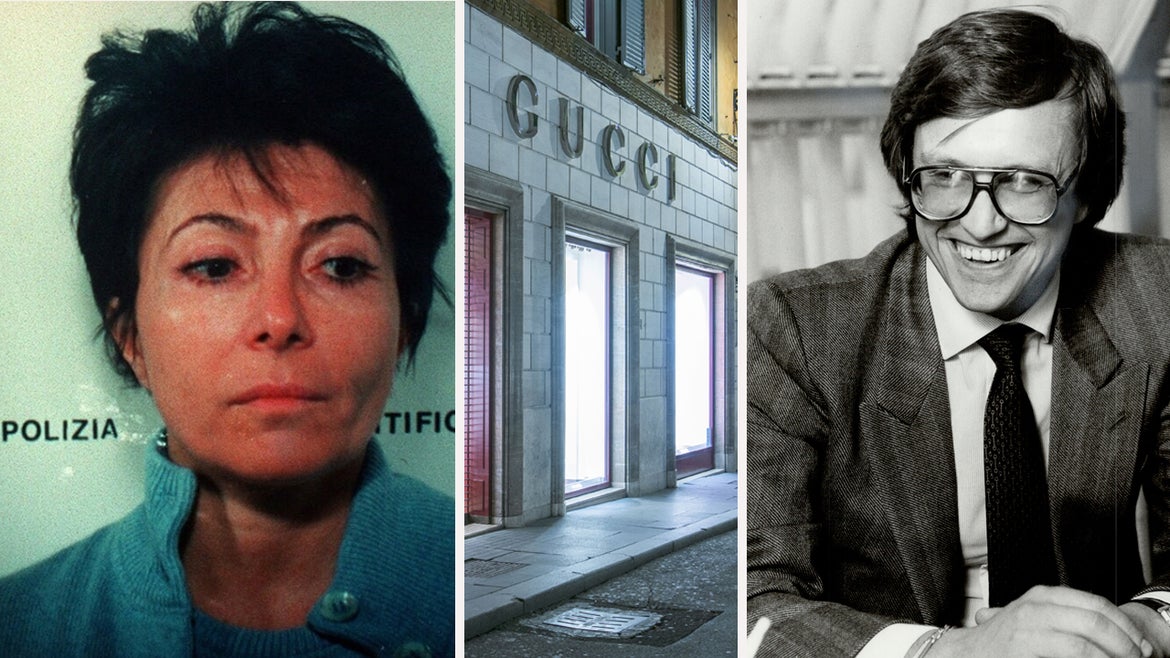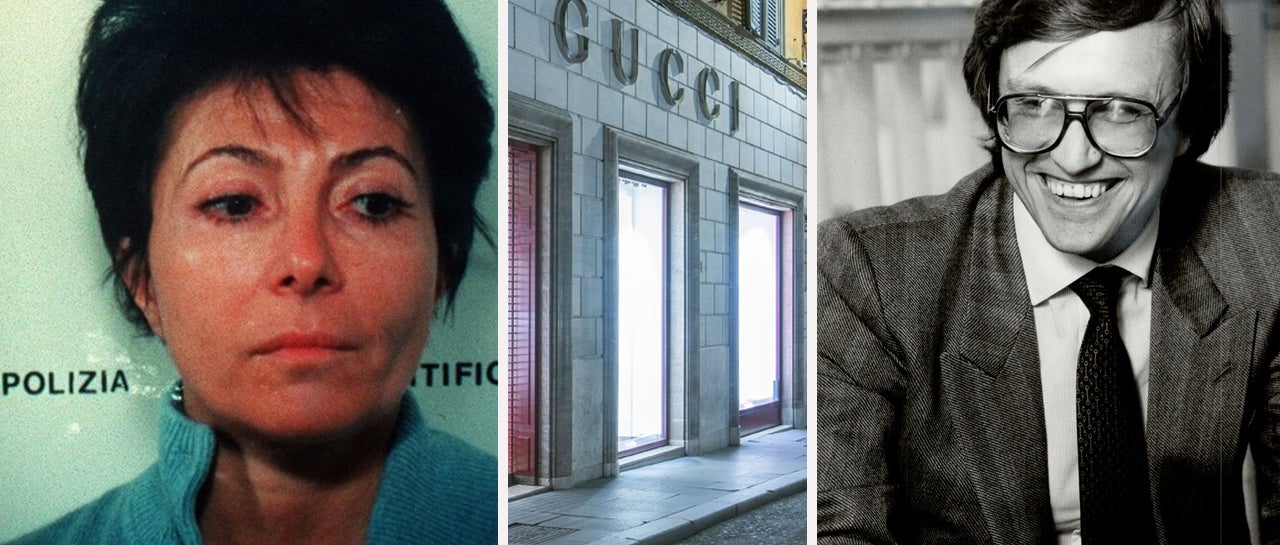"House of Gucci" opens in theaters Thanksgiving.
This November, Lady Gaga leads an all-star cast, including Adam Driver, Al Pacino and Salma Hayek, in Ridley Scott’s true crime biopic, “House of Gucci,” based off Sara Gay Forden’s acclaimed best seller on the Gucci fashion empire and the murder than shocked the fashion world.
Gucci is the luxury Italian clothing brand that is synonymous with opulence, decadence and high society. Synonymous with other Italian brands like Prada, Armani, Versace, and Dolce and Gabbana, the fashion house is seen in every major city around the world, from Milan to New York City, Dubai to Cape Town, and everywhere in between.
Gucci was founded in 1921 by Guccio Gucci in Florence, Italy, and over time became a staple of opulence in the country and then soon Europe. But by the late 1980s and early 1990s, the family at the heart of the brand, then a global empire, was at each other's throats.
Then, in 1995, Gucci made headlines for reasons never expected. Maurizio Gucci, the grandson of the company’s founder, and former head of the fashion house, was murdered outside his office by a hit man who was hired by his wife.
Love, lust, betrayal, greed and glamor all led to the murder of Maurizio Gucci. In a country as obsessed with opera as Italy, this scandal was something that even Puccini would have been shocked by.
How Maurizio Gucci’s Life Fell Apart at the Seams
Maurizio Gucci was born in Florence in September 1948 to Italian actors Sandra Ravel and Rodolfo Gucci. At the time of his birth, his grandfather’s shop where the family sold leather goods was popular with the city’s aristocracy and then later Italian high society.
Following World War II, the family’s fortune and name went international as they created the “Bamboo Bag,” which had the tagline, “Quality is remembered long after price is forgotten.”
Soon after, they opened shops across Italy and Europe at large, and then New York City’s Fifth Avenue. Guccio died in 1953, leaving his fortune and business to his children, who ran the company for decades.
Maurizio didn’t want to follow in his actor parents' footsteps by working in Hollywood, instead, he wanted to expand on what his grandfather created. Along with his uncles and other cousins, the Gucci brand became bigger than Guccio would have ever dreamed by the 1970s.
In 1973, he married Patrizia Reggiani, a woman his father did not approve of, according to The Sun. Reggiani was born out of wedlock after her wealthy businessman father had an affair with her poor mother with whom she lived and Randolfo felt she was not the right fit for his son.
However, Reggiani, enjoyed the opulence and luxury the Gucci family had to offer, The Sun reported.
“I’d rather weep in a Rolls-Royce than be happy on a bicycle,” Reggiani once famously said, according to The Sun.
In the trailer for “House of Gucci,” Lady Gaga, who portrays Reggiani, is seen making the sign of the cross, saying, “Father, Son, and House of Gucci,” showcasing her affinity for and bond to the clan.
A decade after his marriage to Reggiani, Maurizio Gucci’s father died in 1983. He inherited Randolfo’s majority shares of the brand’s empire. He then sued his uncle, Aldo, for full control of the company, according to Harper's Bazaar. Maurizio seized control of the company in 1984 and ousted Aldo.
In 1986, Aldo Gucci was sentenced to a year in prison for tax evasion.
Two years after his father died, Maurizio walked out on his wife and their two daughters, Allegra and Alessandra, to be with his mistress, a younger woman named Paola Franchi, an interior designer, according to Harper's Bazaar.
Reggiani and her husband officially divorced in 1991. At the time, divorce in Italy was considered sacrilegious and made headlines. As part of the settlement, Reggiani reportedly collected the equivalent of $500,000 annual alimony, according to the New York Post.
Throughout this tumultuous time, Maurizio was spending recklessly and by 1993, he had to sell his shares of the company. That year, a Bahrain-based investment group, Investcorp, bought him out of Gucci for $120 million, according to Forbes. It would be the first time in the company’s then-72-year-history that someone other than a Gucci family member was in control, according to reportes.

Meanwhile, Reggiani was reportedly fuming. In the 2021 Discovery+ documentary, “Lady Gucci,” she said that after their split, “I used to go around and ask everyone, even the butcher, to kill him — ‘Is there anyone who has the courage to kill my husband?’”
Eventually, she found what she was looking for.
On the morning of March 27, 1995, Maurizio Gucci was walking up the steps of his office in Milan when he was approached by a well-dressed man who opened fire. Gucci was shot three times in the back and once in the head. He was 46.
A witness, doorman Giuseppe Onorato, was also shot. He was hit twice by the gunman’s bullets.
“It was a lovely spring morning, very quiet,” Onorato told The Guardian in 2016. “Mr. Gucci arrived carrying some magazines and said good morning. Then I saw a hand. It was a beautiful, clean hand, and it was pointing a gun.”
Onorato told The Guardian that, “I thought it was a joke. Then the shooter saw me. He lifted the gun again and fired two more times. ‘What a shame,’ I thought. ‘This is how I die.’”
He cradled his boss’s lifeless body until police arrived.
Maurizio Gucci's killing went cold for two years. But many looked at his ex-wife as a suspect.
Why Patrizia Reggiani Was Known as “The Black Widow”
During her marriage to Maurizio Gucci, Reggiani was known through Italy as the “Liz Taylor of luxury labels,” according to The Guardian.
After her ex-husband's murder, many in Italy, armed with the knowledge that Reggiani made it clear that she wanted him dead, believed she was responsible for the killing. However, with no evidence or proof, detectives could not charge her.
Then in 1997, two years after the murder, detectives received an anonymous tip that it was Reggiani was the mastermind behind the murder. Reggiani was arrested and charged with the murder of her ex-husband soon after the tip came in.
Italian tabloids dubbed her “Vedova Nera,” which means, “The Black Widow.” She appeared in court one year later. What the O.J. Simpson trial was to America just years before, the trial of Patrizia Reggiani was to Italy.

During the 1998 trial, it was learned that Reggiani hired three accomplices to kill her ex-husband. The accomplices included a friend, who helped find the hitman, and a getaway driver Reggiani used and hired, Harper's Bazaar reported.
Reggiani’s diaries were also brought into trial as evidence. There, everything about the crime was mapped out.
Reggiani was convicted of ordering Maurizo's murder and sentenced to 29 years in prison. The gunman was sentenced to life in prison, the getaway driver was sentenced to 29 years in prison, and her friend who coordinated everything was sentenced to 25 years.
Reggiani maintained her innocence throughout the trial and claimed that she was set up by her friend.
During appeals, Reggiani’s daughters and her lawyers argued she had not been able to organize a murder because she had a brain tumor at the time, The Sun reported.
After serving 16 years in prison, Reggiani was released on a work release program, which required her getting a job and carrying out volunteer work, according to Harper’s Bazaar. In 2016, she was released on good behavior.
Following her release, Reggiani was hired as a design consultant by Milan costume jewelry firm Bozart, according to reports.
In 2017, she received over $1.2 million from Gucci's estate and over $22 million in back payments for her time in prison due to a 1993 agreement after her divorce from Maurizio, according to The Telegraph. Maurizio’s estate and her daughters unsuccessfully appealed the decision, the Telegraph said.
In 2014, an Italian news crew met with Reggiani and asked, “Patrizia, why did you hire a hitman to kill Maurizio Gucci? Why didn’t you shoot him yourself?”
“My eyesight is not so good,” she replied. “I didn’t want to miss.”







